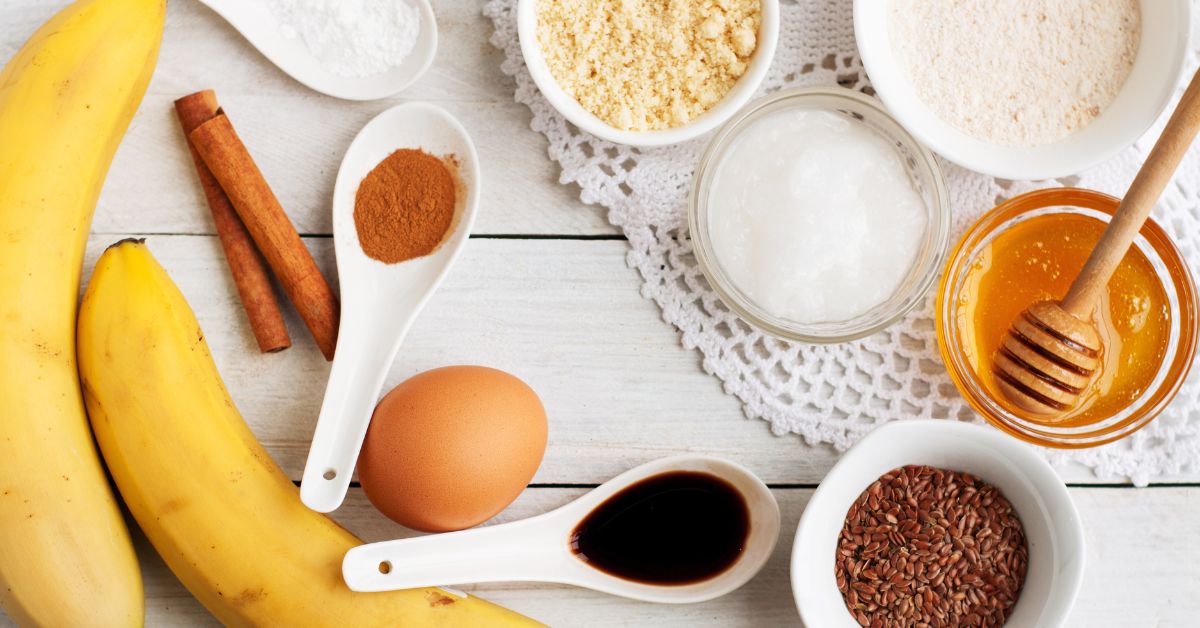Creating healthier meals doesn’t mean losing the flavors you love. In this article, Health Coach and Wellness Strategist Laura LeBlanc shares simple ingredient swaps to make your favorite dishes both delicious and healthier.
Whether it’s a holiday feast, or a special dinner for your family or friends, cooking and baking can often feel like a tug-of-war between flavor and health. The good news? You don’t have to choose one over the other! With a few simple ingredient swaps, you can enjoy your favorite dishes year-round while lowering inflammation and boosting nutrition.
In this guide, you’ll find 10 easy swaps to make your meals both delicious and nourishing—no matter the occasion.
Ready to elevate your recipes and feel amazing doing it? Let’s dive in!
1. Applesauce Instead of Oil or Butter
Using unsweetened applesauce in place of oil or butter adds moisture and natural sweetness to baked goods, reducing fat without sacrificing texture.
- How to Use: Substitute applesauce at a 1:1 ratio for oil or melted butter in cakes, muffins, and quick breads.
- Tip: Use unsweetened applesauce for best results, and reduce other liquids slightly if the batter feels too wet.
2. Nut Butter Instead of Oil
Almond or cashew butter adds healthy fats, protein, and a creamy texture to recipes while cutting out processed oils.
- How to Use: Swap nut butter for oil in brownies, cookies, and energy bites.
- Tip: Choose natural, unsweetened nut butters to avoid added sugars.
3. Coconut Sugar or Maple Syrup Instead of White Sugar
Coconut sugar and pure maple syrup are less processed, offer a subtle caramel flavor, and have a lower glycemic index than white sugar.
- How to Use: Use coconut sugar as a 1:1 replacement for white sugar. For maple syrup, reduce other liquids slightly to maintain texture.
- Tip: Maple syrup works well in cakes and cookies, while coconut sugar is versatile for all baking needs.
4. Arrowroot Powder or Tapioca Flour for Thickening
These gluten-free, minimally processed options are ideal for thickening holiday sauces, soups, and gravies.
- How to Use: Substitute arrowroot powder or tapioca flour at a 1:1 ratio for cornstarch. Whisk into cool liquids before heating to prevent clumping.
- Tip: Arrowroot powder adds a glossy finish, perfect for pie fillings and gravies.
5. Almond Flour or Coconut Flour Instead of All-Purpose Flour
Almond and coconut flours are nutrient-dense, gluten-free alternatives that add unique flavor and texture to baked goods.
- How to Use: Use almond flour in a 1:1 ratio for regular flour, but reduce liquids by 1/4. For coconut flour, replace up to 1/3 of the flour and add extra liquids.
- Tip: Almond flour is ideal for cookies, while coconut flour works well in pancakes and muffins.
6. Greek Yogurt Instead of Sour Cream
Greek yogurt provides a creamy texture and protein boost, with fewer calories and fat than sour cream.
- How to Use: Substitute Greek yogurt at a 1:1 ratio for sour cream in dips, dressings, and baked goods.
- Tip: Use full-fat Greek yogurt for a richness similar to sour cream.
7. Avocado Instead of Butter
Avocado adds healthy fats and a smooth texture, making it an excellent butter alternative for both sweet and savory dishes.
- How to Use: Substitute mashed avocado for butter at a 1:1 ratio in brownies, cookies, or mashed potatoes.
- Tip: Avocado is especially good in chocolate-based recipes, where it blends seamlessly with rich flavors.
8. Oat Flour for Whole-Grain Goodness
Oat flour, made by grinding oats, is gluten-free and adds fiber, a nutty flavor, and whole-grain benefits.
- How to Use: Replace up to half of the all-purpose flour with oat flour in cookies, quick breads, and pancakes.
- Tip: Make oat flour at home by blending rolled oats until fine.
9. Raw Honey Instead of Refined Sugar
Raw honey is packed with antioxidants and nutrients, offering a healthier alternative to highly processed sugars.
- How to Use: Substitute 1/2 to 3/4 cup of honey for every 1 cup of sugar, reducing other liquids slightly as honey adds moisture.
- Tip: Look for raw or unfiltered honey to ensure minimal processing and maximum nutrients.
10. Cauliflower Rice Instead of White Rice
Cauliflower rice is a low-carb, anti-inflammatory alternative to white rice, adding fiber and nutrients without the starch.
- How to Use: Swap cauliflower rice for white rice in casseroles, side dishes, and even stuffing.
- Tip: Sauté cauliflower rice with a little garlic and herbs for added flavor before mixing into dishes.
Enjoy Healthier Recipes Year-Round
With these simple ingredient swaps, you can make your favorite dishes more nourishing and less inflammatory without sacrificing flavor. Whether it’s a family dinner, a celebration, or just an average Tuesday, these tweaks are easy to incorporate into any recipe.
Here’s to creating meals that nourish your body and delight your taste buds—any time of the year. Happy cooking, and enjoy every bite!
For more tips and strategies, click here to download your free health guides.

